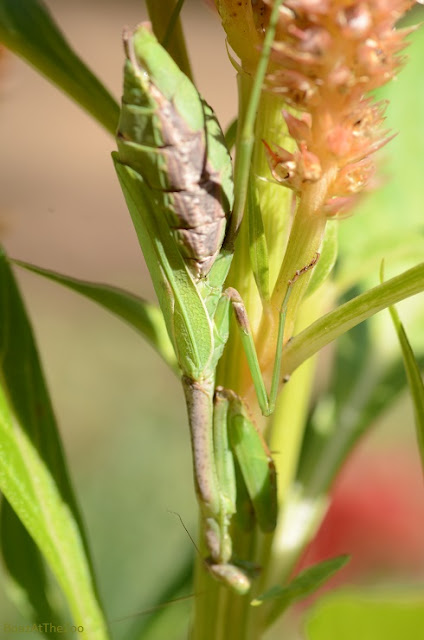I tried to make a composite image of a gecko, and that was a failure. A composite chameleon was simpler and better. Since then, I tried to make a macro composite of a cicada exoskeleton.
That proved to be beyond me. Keeping the antennas and hairs while adding in-focus legs was difficult. Also, as the focus changes, elements of the image appear to move. An out-of-focus leg is smeared wider than the same leg that in focus, so when I put the in-focus leg on top of the out-of-focus leg, the leg ended up with a tan halo. If I included part of the background (a window screen), that didn't work because the screen's wires from different pictures didn't line up. A solid-color background would help.
There are tools that make this kind of thing easier. A camera can be mounted on a focus rail. Then, after an initial focus, a picture is taken, and the camera is moved a small, measured distance before the next picture is taken. That has the effect of changing the focus at consistent intervals without touching the camera. Then, after taking tens of pictures, focus-stacking software, as it's called, takes all the pictures and makes one image with everything in focus. I don't know how seriously I want to pursue this, and I'm a cheapskate, so I'm not buying anything. Yet.
I decided to stop trying to make composite images, until the missing gardener pointed-out a praying (could be "preying," no?) mantis.
I thought I might be able to make a composite of the mantis's body because it doesn't have a lot of projections. I started with the head and "neck" and worked my way back. That turned out okay, but I decided to make another composite starting at the other end, and that's what you see here. I used five shots.
It's not bad, especially at a smaller size. There are lines across the plant stems, and other artifacts are visible at a larger size.
Here are five pictures.







This is cool,Steve!
ReplyDeleteLike it. Nice job. I’ve never tried. JA
ReplyDelete